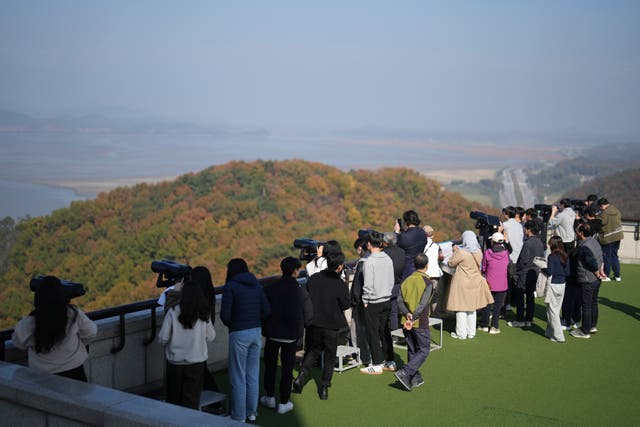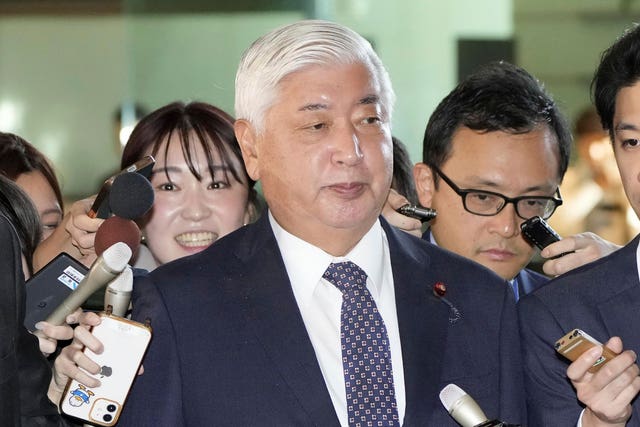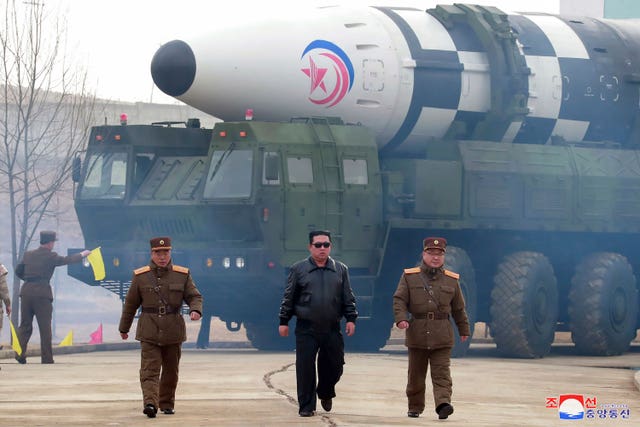North Korea confirms test on new intercontinental ballistic missile
State media said leader Kim Jong Un was present at the launch site.

North Korea said it has tested a new intercontinental ballistic missile.
North Korea’s state Korean Central News Agency (KCNA) said Thursday’s launch was carried out at the order of leader Kim Jong Un and that flight records exceeded corresponding ones registered in any previous missile launches.
KCNA said Mr Kim was present at the launch site and cites him as saying that the launch was “an appropriate military action” to show North Korea’s resolve to respond to its enemies’ moves that has threatened the country’s safety.
The first launch in almost a year tested what may be a new, more agile weapon targeting the mainland US and a possible attempt to grab American attention ahead of next week’s election.

The launch came as Washington warned that North Korean troops in Russian uniforms are heading toward Ukraine, likely to augment Russian forces and join the war.
US National Security Council spokesman Sean Savett called the launch “a flagrant violation” of multiple UN Security Council resolutions that “needlessly raises tensions and risks destabilising the security situation in the region”.
He said the US will take all necessary measures to ensure the security of the American homeland and its South Korean and Japanese allies.
South Korea’s Joint Chiefs of Staff said North Korea could have tested a new, solid-fuelled long-range ballistic missile.
Missiles with built-in solid propellants are easier to move and hide and can be launched quicker than liquid-propellant weapons.
Joint Chiefs of Staff spokesman Lee Sung Joon said the launch was possibly timed to the US election in an attempt to strengthen North Korea’s future bargaining power. He said the North Korean missile was launched on a high angle, apparently to avoid neighbouring countries.

Japanese defence minister Gen Nakatani told reporters the missile may have been a new one since its flight duration of 86 minutes and its maximum altitude of more than 4,350 miles exceeded corresponding data from previous North Korean missile tests, an assessment shared by South Korea.
Both South Korea and Japan condemned the North Korean launch for posing a threat to international peace and they said they were closely co-ordinating with the US.
Mr Lee said South Korea and the US plan “sufficient” bilateral military exercises and trilateral ones involving Japan in response to North Korean threats.
He said the North Korean missile may have been fired from a 12-axle launch vehicle, the North’s largest mobile launch platform that it disclosed in September. The vehicle’s unveiling had prompted outside speculation that North Korea could be developing an ICBM that is bigger than its existing ones.
North Korea has made strides in its missile technologies in recent years, but many foreign experts believe the country has yet to acquire a functioning nuclear-armed missile that can strike the US mainland. They say North Korea likely possesses short-range missiles that can deliver nuclear strikes across all of South Korea.

One of the technological hurdles North Korea still faces is for its weapons to be capable of surviving the harsh conditions of atmospheric re-entry. South Korean officials and experts earlier said North Korea may test-launch an ICBM on a normal angle to verify that capability.
North Korea last test-fired an intercontinental ballistic missile in December 2023, when it launched the solid-fuelled Hwasong-18.
In the past two years, Mr Kim has used Russia’s invasion of Ukraine as a window to ramp up weapons tests and threats while also expanding military cooperation with Moscow.
South Korea, the US and others have accused North Korea of dispatching thousands of troops to support Russia’s warfighting against Ukraine. They have said North Korea has already shipped artillery, missiles and other arms to Russia.
On Wednesday, US defence secretary Lloyd Austin said North Korean troops wearing Russian uniforms and carrying Russian equipment are moving toward Ukraine, in what he called a dangerous and destabilising development.
Mr Austin said “the likelihood is pretty high” that Russia will use the troops in combat.
South Korea said on Wednesday that North Korea has sent more than 11,000 troops to Russia and that more than 3,000 of them have been moved close to battlefields in western Russia.





